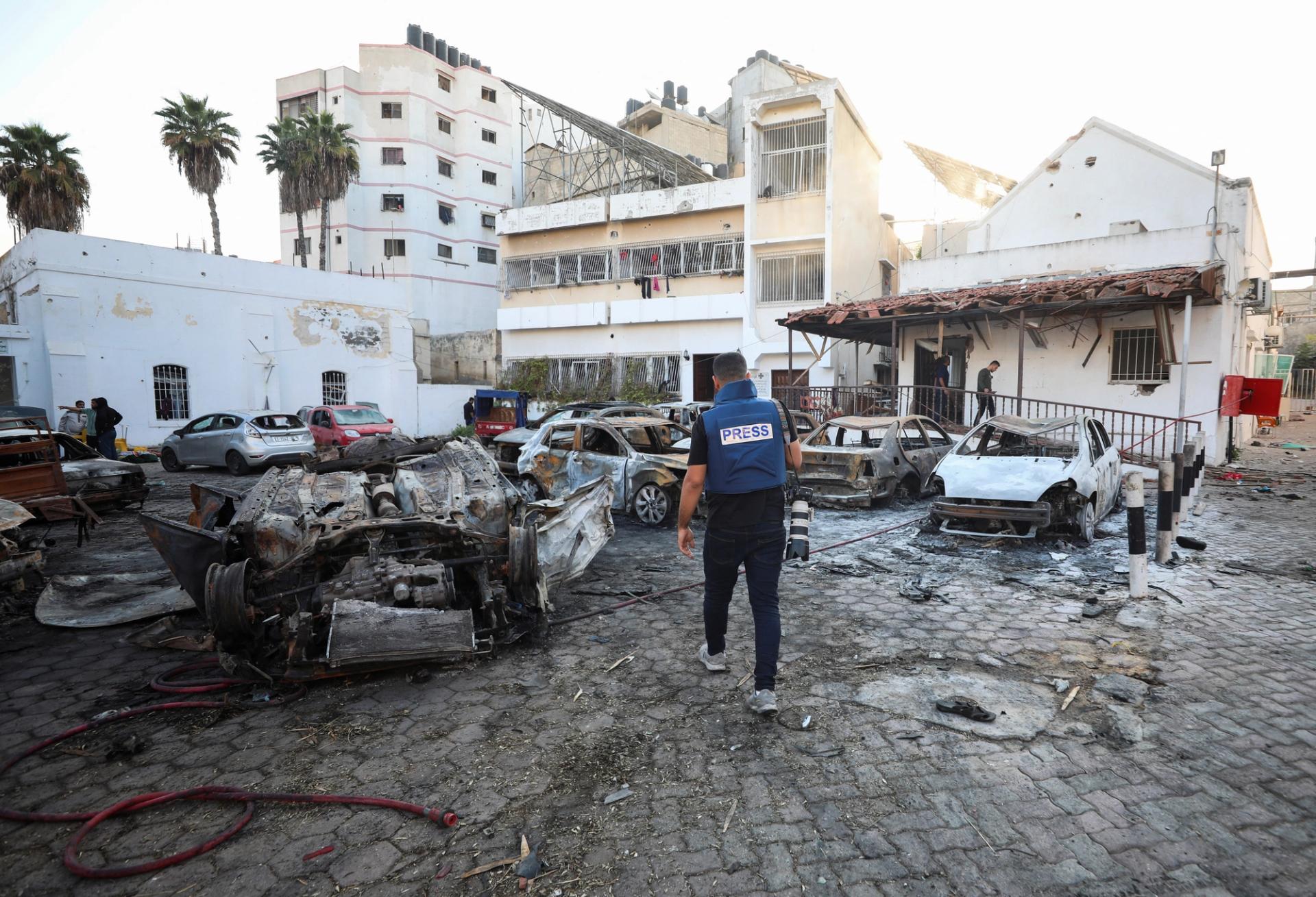The News
Confusion over a hospital explosion in Gaza this week showed how difficult it’s been for people around the world to get up-to-date and reliable information about what’s happening on the ground during the conflict between Israel and Hamas.
A range of factors, from press access to changes on social media platforms, are to blame.
SIGNALS
The social media landscape has seen drastic changes even since the Russia-Ukraine war started in 2022. It’s been well-documented how the changes made to Twitter specifically, now called X, have been linked to the spread of more misinformation online. And other platforms including Facebook, Instagram, and Threads, have leaned away from news and current events. “It’s a little unsettling,” a former elections policy executive at Facebook told Bloomberg. “People used to know they could go to Twitter for this or Facebook for that. Now people don’t know where to go.”
The conditions for journalists in Gaza also make it harder to get immediate and accurate updates. Immediately following the hospital blast, news outlets had to rely on dueling statements from Hamas and the Israeli government over who was responsible. There are only a limited number of journalists currently working in Gaza through dangerous conditions, limited internet connection, and electricity outages. Outside journalists have been unable to enter Gaza, since the sole entry point from Israel has been closed since Hamas’ attack. That “hinders the world’s ability to get a full picture of what is happening to the Palestinian population,” the Associated Press wrote.
Parties at war are never unbiased sources, and this conflict is no different. There are reasons to be especially skeptical about initial claims from either side of this war: Gaza is governed by Hamas, which has falsely claimed it didn’t kill innocent civilians when it attacked Israel on Oct. 7. And the Israeli military has also denied or dodged responsibility for civilian deaths it has been responsible for. Sides at war “aggressively push information in their favor,” The New York Times wrote this week, and misinformation only adds to the confusion. “There are so many untrue claims that some people question the true ones.”
Several X accounts that pay to be verified are branded around “OSINT,” which stands for open source intelligence and uses social media posts, satellite images, and other online sources to confirm and share news. But many of those accounts have shared misleading information in the interest of profit and clout, 404 Media wrote this week. OSINT can be a helpful way for journalists to verify facts, but the war in Gaza has made it clear “that there are many verified, popular accounts on X that use the OSINT term to give legitimacy to shoddy work,” the tech outlet wrote. A NewsGuard analysis also found that verified X accounts are “superspreaders of misinformation about the conflict.” Financial Times journalist John Burn-Murdoch argued this week that large newsrooms still aren’t fully proficient in OSINT, and should utilize it more to confirm facts in the fog of war and avoid having to rely on statements from sources and parties who “are clearly motivated to mislead.”
Perhaps surprisingly, generative artificial intelligence — the newfound ability for anyone to create semi-believable fake images or videos — has not been a major source of disinformation during the war, Poynter wrote this week. Instead of deepfakes, “the dominating threat has instead been real footage used out of context,” the site wrote. Many of the debunked images and video have been from conflicts in Syria or Turkey, or old footage from Gaza.

